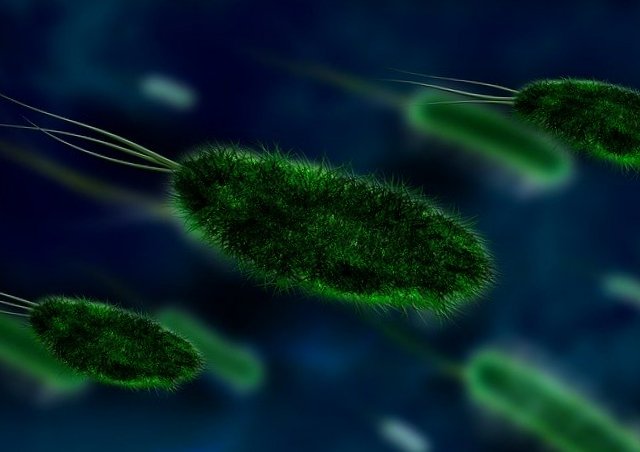Diseases and Wild Animals
With microorganisms making up more than ninety-nine percent of all organisms, there are plenty of diseases in existence – despite most microorganisms not even causing diseases.

We, as humans, have had our bodies slowly become immune to many diseases, and have been able to use science to create vaccines and other medications to help protect against them. Wild animals, on the other hand, still remain vulnerable to these diseases and can spread them to each other, pets, and even people. What diseases do they have?
Chytridiomycosis
Cause: Fungus
Affects: Amphibians
This difficult-to-pronounce disease is one caused by a particular fungus called “chytrid”, and it only affects amphibians.
- The fungus attaches and infects a frog or salamander’s skin, and slowly destroys it.
- Because amphibians absorb most of their nutrition through the skin, this fungus throws off their body’s salt and water balance.
- The unbalance causes death. Unfortunately, the amphibians will usually dip into a pond and infect other animals before the disease takes their life.
Chytridiomycosis is so effective at wiping out amphibian populations that it’s been considered one of the largest destroyers of biodiversity in recent history. Infected amphibians might have pale and thick skin, or they may show plenty of shedding.
White Nose Syndrome
Cause: Fungus
Affects: Bats
White Nose Syndrome is another disease caused by fungus.
- This disease attacks hibernating bats and eats away at their skin.
- When infected, bats will be constantly waking up in the middle of their winter hibernation. This makes them use up the limited store of energy in their bodies.
- Once the bats run out of fat and energy, they die.
If a bat’s den has even a single infected member, it could quickly spread among them. Reports show that upwards of seventy percent of an infected den will die. The disease owes its name to the symptoms shown by dying bats, namely a fuzzy white substance on their nose.
Bird Flu
Affects: Birds and Humans
Having made quite the headlines a while ago, this disease infects all sorts of birds, wild or domestic. When a bird comes down with the bird flu, it’s almost guaranteed to die with a mortality rate above ninety percent.
This disease is usually spread when an infected bird sheds its feathers or leaves feces that another bird comes into contact with. Symptoms of the disease include:
- diarrhea
- purple marks
- coughing and sneezing
- lack of energy
Though birds are the ones being infected by the disease, reports show that some individuals – mainly those working in chicken farms – can be infected, and the disease has proven to be just as fatal to humans as birds.
Feline Immunodeficiency Virus (FIV)
Affects: Cats
FIV acts similarly to the human variation, HIV. Symptoms of FIV include fever, weight loss, diarrhea, and sneezing.
- Once your pet cat is infected by a wild cat, it will take several years for them to develop symptoms.
- The virus slowly attacks your cat’s immune system, and leaves them vulnerable to plenty of other diseases.
To prevent your cat from catching the disease, it’s best to keep them indoors where infected wild animals can’t bite them to transfer the virus.
Rabies
Carriers: Bats, Raccoons, Foxes, etc.
Affects: Wild Animals, Pets, Humans
This disease is quite a dangerous one. It infects wild animals, pets, and humans alike. Bats, raccoons, and foxes are especially prone to carrying it, and can easily transfer it to you or your pets through a bite. In humans, the disease can cause headaches and fever. Because it’s a disease that targets the nervous system, it can also paralyze a person. If left untreated, a person can quickly die in a matter of days or weeks.
Rat-Bite Fever
Carrier: Rats
Affects: Rats and Humans
Rats are a cesspool of diseases and have caused a number of plagues throughout history. One commonly caused disease is rat-bite fever. This bacterial disease is present in at least half of all wild rats, and even in plenty of domesticated ones, putting people with pet rats at risk. All it takes is a bite or scratch from an infected rat, and you’re likely to contract the disease. Symptoms include fever, vomiting, and even a rash.
Hantavirus
Carrier: Rats
Affects: Pets, Humans
This is another disease caused by rats. Exposure to an infected rat’s feces can not only infect you but can also harm your pets. It’s also very fatal, with a third of infected individuals dying from it. Symptoms include fever, muscle aches, and headaches. A late-stage symptom of the disease results in one’s lungs being filled with water.
As you can see, plenty of animals are disease-ridden and pose a risk to both themselves, pets, and even people. Though not much can be done to help save wild animals, you can still do plenty to keep yourself and your pets safe. All it takes is a bit of distancing from wild animals and a bit of cleaning, and you can rest assured that you’re safe from any disease.
